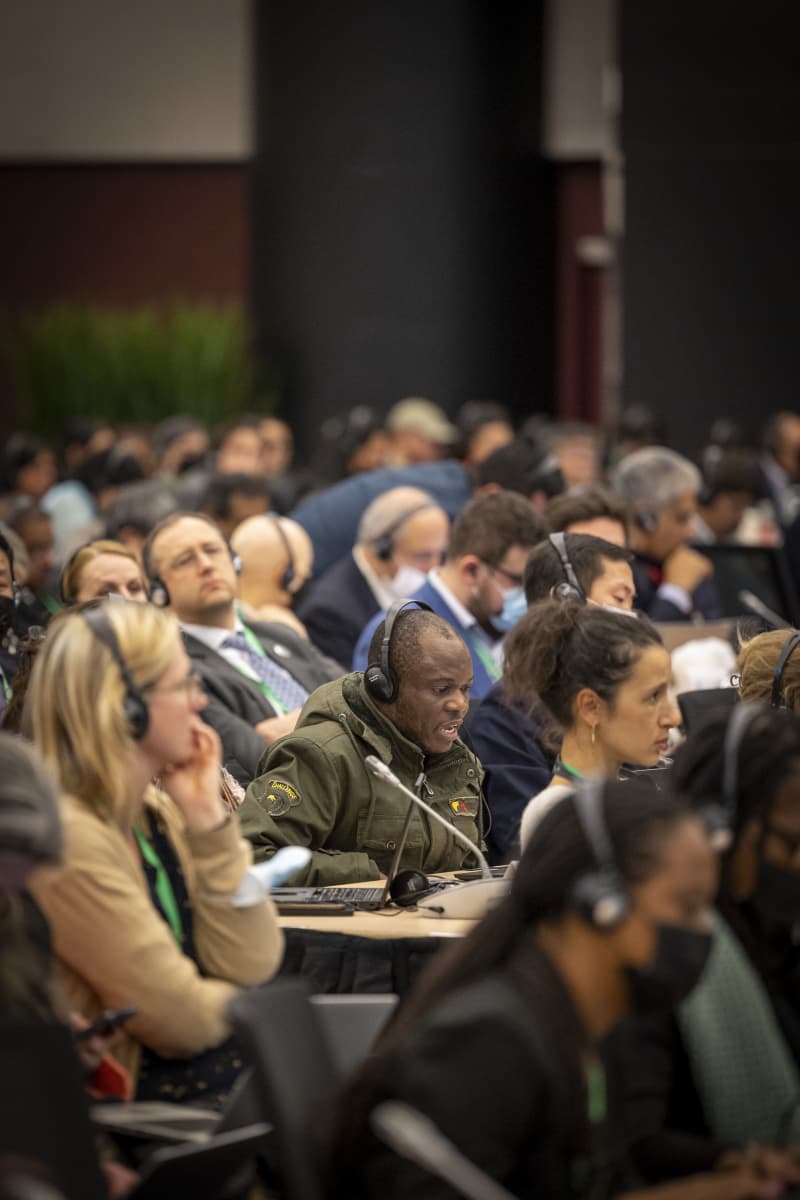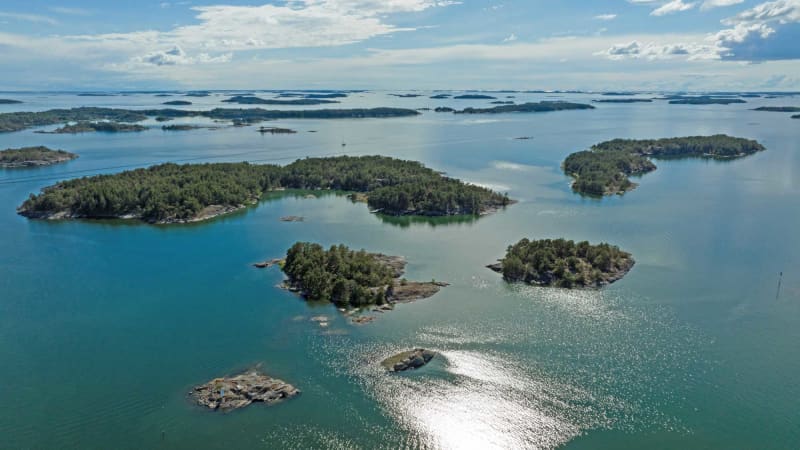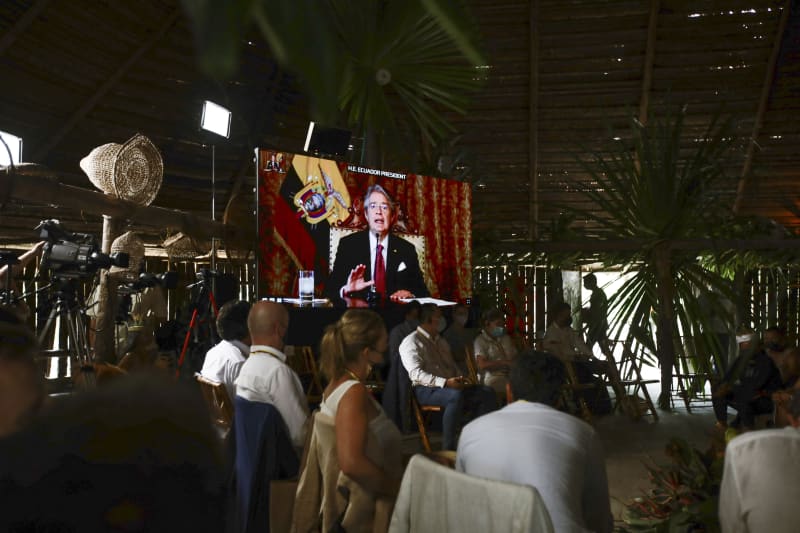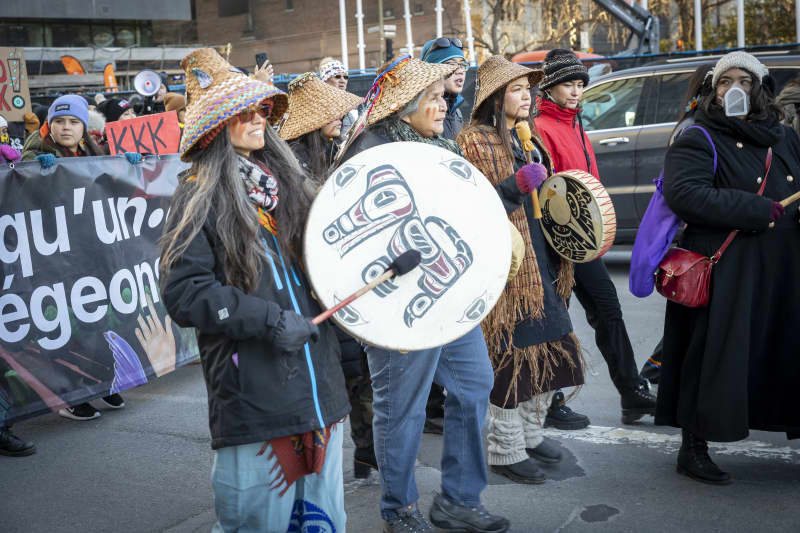
The package negotiated in Montreal has been considered ambitious and successful, but there is always room for improvement. Johannes Blom, a journalist who followed the meeting on the spot, analyses the negotiations.
A quick lick and a huge round of applause. The text of the Montreal Nature Conference, worked on so late into the night, was finally adopted within seconds of the clock striking 3.34am local time.
Hopes and expectations before the meeting were higher than ever – also for the Chinese chair. China’s leadership was criticised on several occasions during the four years of preparation. Now, in Montreal, the pressure for success had mounted.
UN efforts to halt biodiversity loss have consistently failed in the past. None of the targets set in Japan in 2010 were fully met, and the loss of nature had not stopped or even slowed down by the time the calendar turned to the 2020 deadline.
Corona delayed the most important nature meeting of the decade by two years, moved negotiations to remote meetings and slowed down preparations. The delegations sitting in the hall last night knew they were holding a time bomb in their hands.
Many African countries, especially the Democratic Republic of Congo and Cameroon, expressed their dissatisfaction with the decision to increase development cooperation money.

The countries hoped that half of the US$200 billion funding gap would be covered by funding from wealthy countries. In the final decision, the sums were less than a third of the wish.
African countries felt that the quick decision of the Chinese presidency to approve the agreement ignored their objections. The secretariat of the meeting estimated that the required rules were followed in the decision, since no official objections to the approval were given or at least there was no time to give them.
It is understandable that they wanted to finish a package that had been prepared for four years. The resounding applause largely spoke of a shared state of will, but silenced one of the central principles of international decision-making.
\”History will remember this,\” said the Congolese representative in the aftermath of the clubbing. The question of how the implementation of the agreement will be successful, if the trust in fair proceedings in international diplomacy has taken a hit, was left in the air.
The Minister of the Environment of the Democratic Republic of the Congo, Ève Bazaiba, said the day after the negotiations that the country did not accept the text. The country intends to inform the UN Secretary General of its position.

Numbers, numbers, numbers
The package drawn up during the negotiations has generally been well received, but has also attracted criticism.
The Kunming–Montreal agreement aims to stop the loss of nature and to turn the nature consumed and burdened by humanity on the road to recovery, but how well set goals guide us towards these beautiful ideas?
Even before the meeting, the agreement was widely compared to the Paris climate agreement. The similarities between the papers are related to communicative gains and numerical symbols. The 30 percent protection goal agreed in Montreal can be considered a kind of equivalent to the 1.5 degree goal of the Paris Agreement.

However, the now negotiated framework is not legally binding like the Paris Agreement. There is no mechanism by which the parties could be forced to take additional measures if the goals threaten to slip out of control.
When you know the history of combating nature loss, a package that depends on trust and faith easily arouses a pessimistic undertone and the fear that the third time will not tell the truth.
Optimism was packed with the concreteness of the text – at least compared to the goals of 2010 – which the EU and Finland, as part of it, announced throughout the negotiations. Numerical goals were written into the text, such as increasing funding, protection, restoration, combating harmful alien species and reducing subsidies harmful to nature.
These writings in particular were widely accepted and recognized as valuable steps towards living in harmony with nature.
The realization of the Aichi goals set in 2010 failed almost completely. The only glimmers of light were related to those goals that were clear and contained numbers.

But there is a flip side to the coin: some goals lacked numbers or a clear timeline, such as the entry on stopping human-caused extinctions.
The agreement does not pay enough attention to the role of overconsumption as a driver of nature loss. They want to encourage people to make sustainable consumption choices, reduce the global footprint of consumption by 2030 and halve food waste.
But roundabout expressions of encouragement or encouragement leave loopholes and can contribute to failure.
What is the much talked about 30/30 target all about?
Since the goal is largely about numbers, let’s first create an overview of the numbers.
More than 70 percent of the world’s surface area is oceans, the size of which is difficult to put in such a way that a person could truly perceive it.
The Kunming–Montreal agreement mentions sea and land areas separately, of which 30 percent of both are to be protected. The seas are also mentioned as part of the 30 percent restoration target.
In previous goals, the protection of marine areas remained at a significantly lower level, only 10 percent. Many feared during the negotiations that the protection of the seas would be watered down again.
However, there is a significant problem related to the ocean that needs to be solved at other UN tables. Most of the oceans are international waters. The UN countries have been negotiating a high seas agreement for a long time, but without success. The negotiations will continue in March 2023.

Somewhat surprisingly, inland waters were also mentioned in the conservation goals. Finnish WWF thought this was valuable, because according to the latest Living Planet index, especially freshwater ecosystems are threatened in Finland.
The protection of 30 percent of land areas would mean, judging purely by surface area, that all the world’s forests would be protected. This is just a comparison, as the land area includes other valuable habitats for nature.
The conservation goal presented in the agreement includes other methods of conservation than strict conservation, i.e. the establishment of national parks or nature reserves. Regarding the protection goal, we also talk about recreation areas and forests, which can also be partially exploited economically.
There is still a problem with the conservation goal that 30 percent would be met immediately, found in the areas of indigenous peoples and local communities.
The protection goal mentions the recognition and respect of the rights of indigenous peoples and local communities, but during the negotiations the peoples have shown their concern about whether this will be realized in practice.

The non-governmental organization Avaaz hoped for even tougher conservation goals. According to the organization, governments should listen to science and protect half of the planet by 2030.
Even though four years of work are behind us, the journey is not at the end, but at the beginning. The fall of the gavel hit on the table at night is meaningless if it does not start a chain reaction, where the countries of the world start applying the goals that have just been drawn up in their national decision-making.
The solution to nature loss requires global actions, but concretely, the problems are solved at the local level. The environment must be protected and restored where it exists.
If this action is not taken globally, ten years from now we will again be in our mouths, deciding on new ways – if there is still time for them.
In any case, the goals set now set an ambitious path and the world has a right to be proud of the decisions made here in Montreal.
